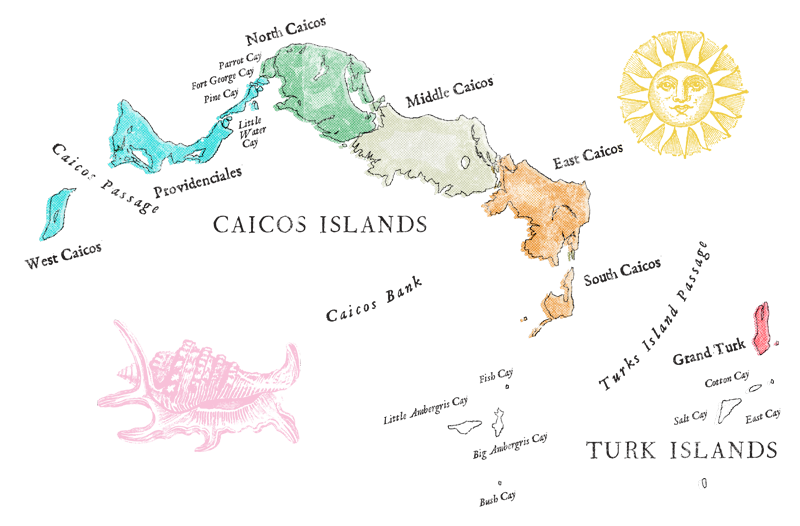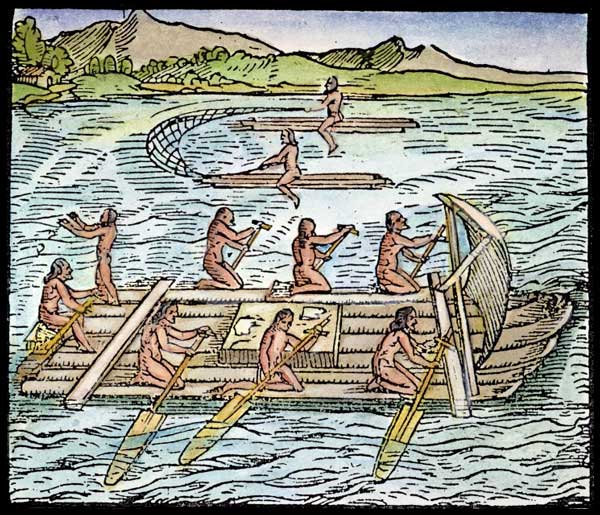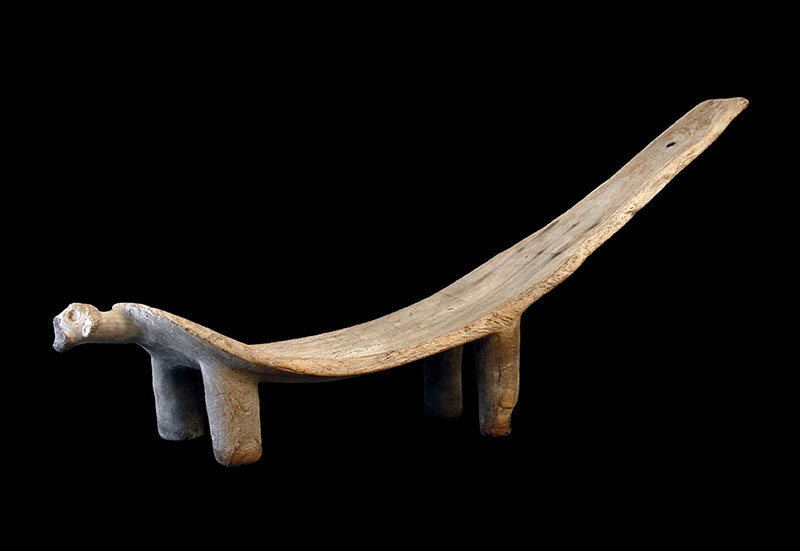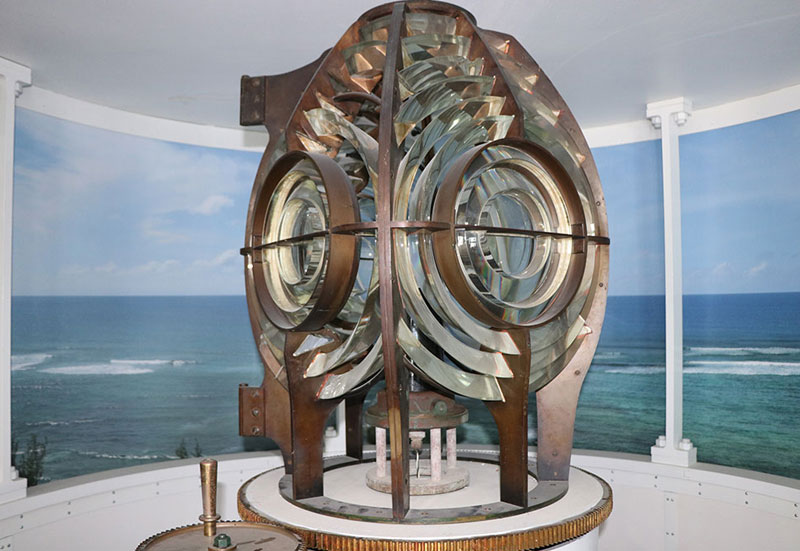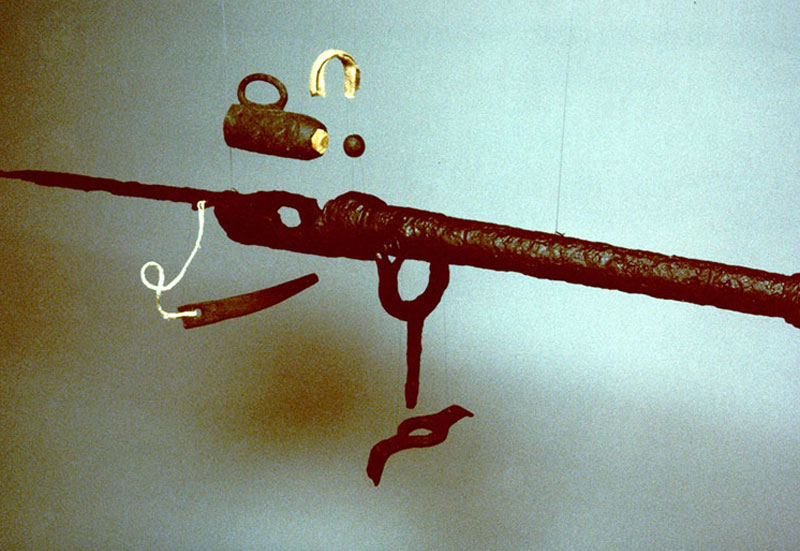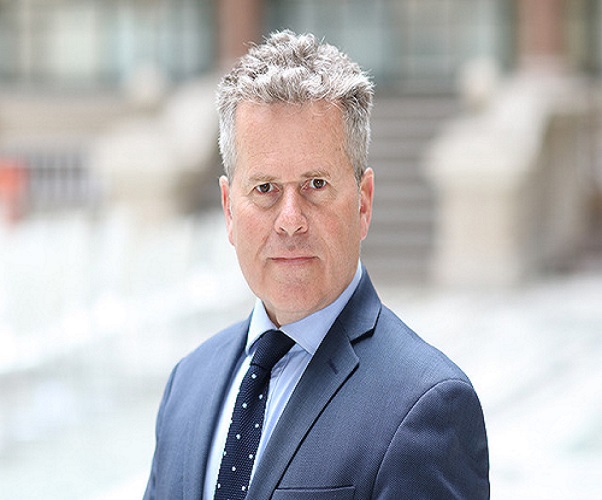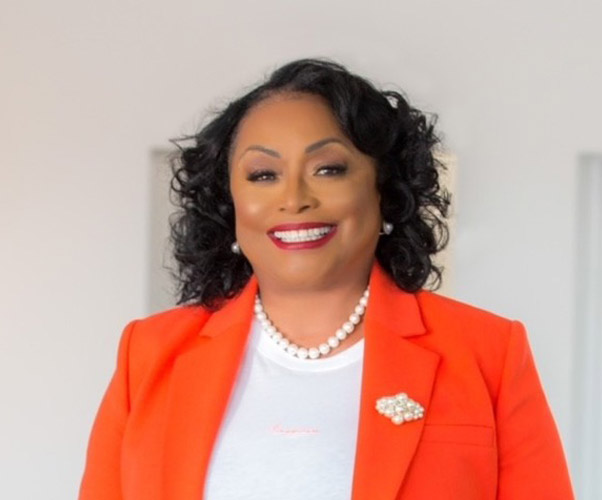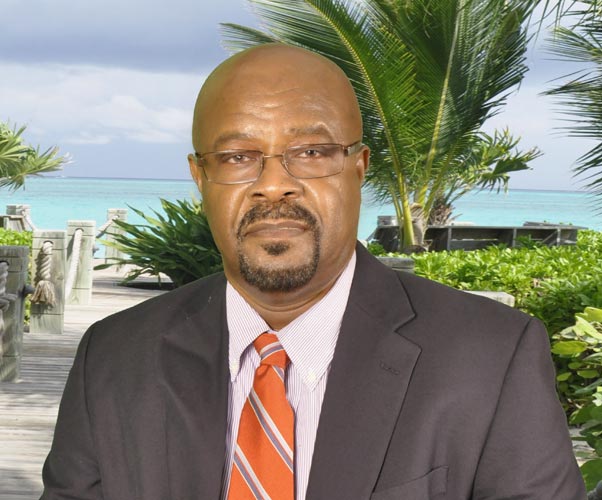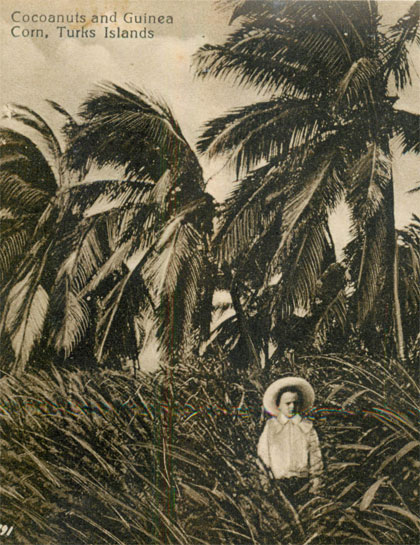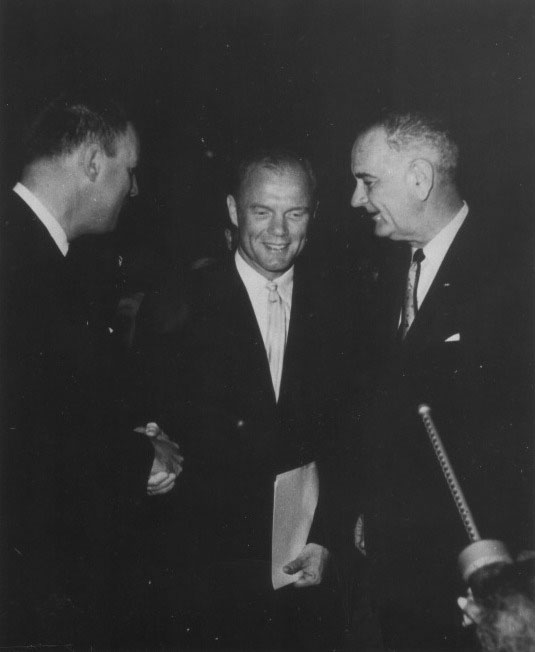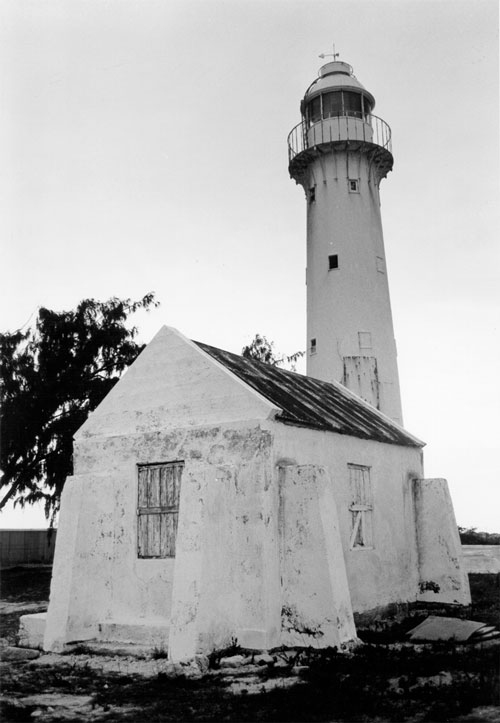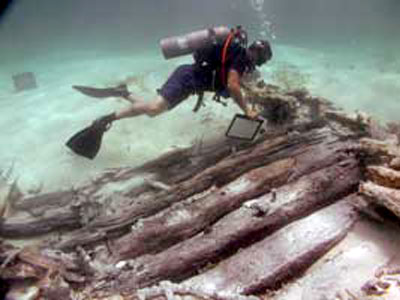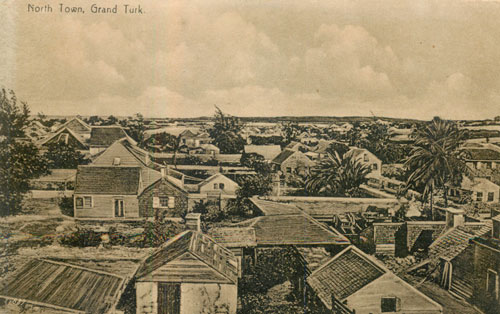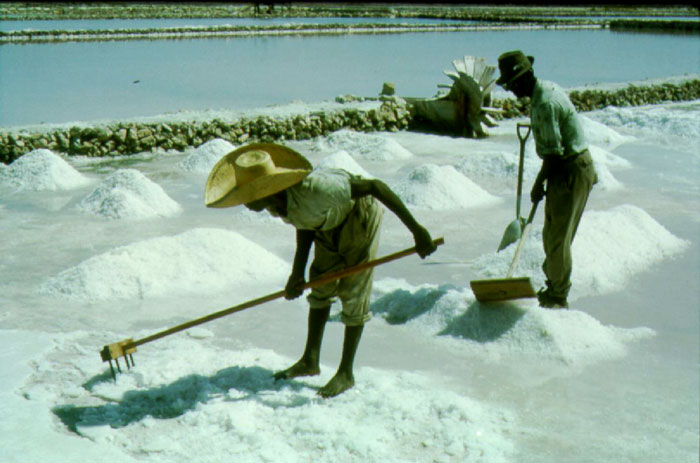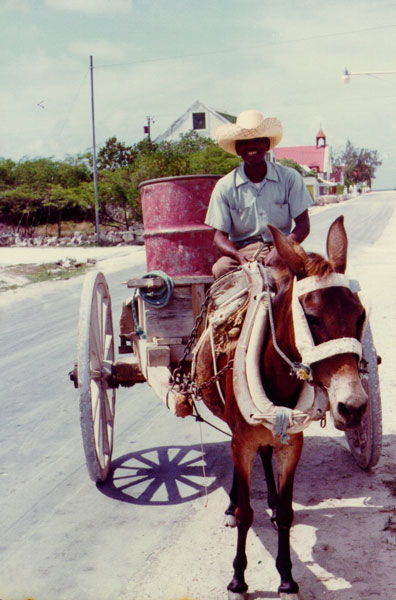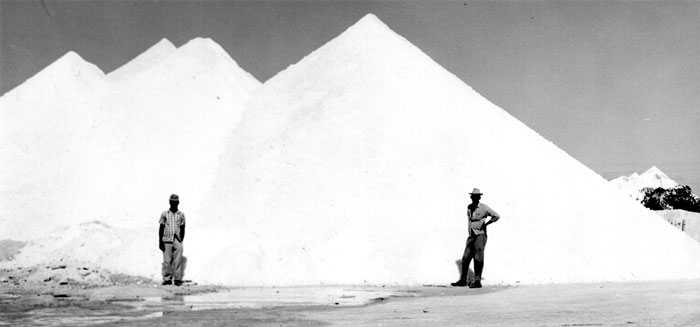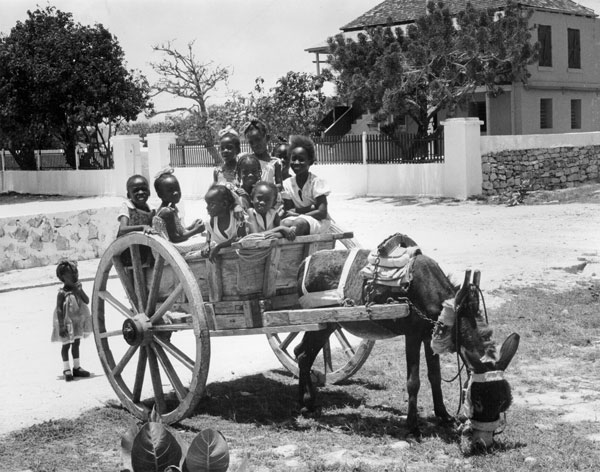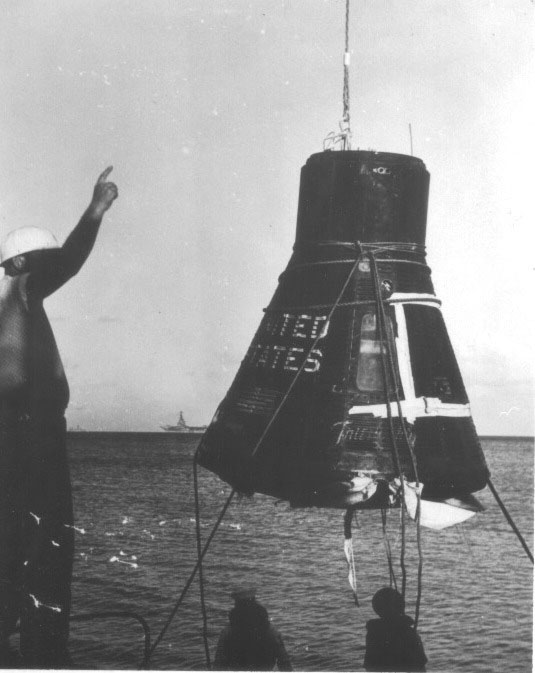A National Treasure
Sometimes as fate conspires, you know something is just meant to happen. When the National Museum opened its new Lucayan Gallery in November 2001 it had a wide variety of Lucayan/Taino artifacts in its own collection but there were several very important items held in museum collections overseas.
The Return of a Lucayan Duho
The Museum negotiated the return on loan some of these items from the Smithsonian Institution including a magnificent carved stone figurine (see Astrolabe Spring 2002). However there was one item missing, a Lucayan ceremonial seat, known as a duho. We were unable to gain on loan any of the three Turks and Caicos duhos held at the Smithsonian. This left a major hole in our exhibition, temporarily filled by a copy duho carved by the then Museum Manager, Brian Riggs. What the gallery lacked was an original piece.
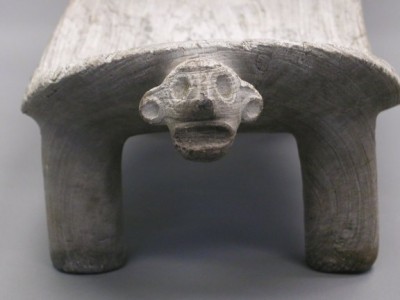
Duho looking at the front. Image Turks & Caicos National Museum
Duho’s are ceremonial seats usually found in caves. It is unclear if they were used as seats for the chiefs during religious ceremonies, important meetings or, as some archaeologists believe, were used to support the body of an important Lucayan after death. As the locations of where the Turks and Caicos duhos were found were not recorded properly, nor associated finds such as pottery, animal remain or even human bones were recorded, this will remain a mystery.
In 1999 Joanna Ostapkowicz produced a doctorate dissertation entitled Taino Wooden Sculpture: Rulership and the Visual Arts in the 12th-16th Century Caribbean. The section on the Bahamas identified 15 duhos found in the Bahamas and 9 in the Turks and Caicos Islands. Unfortunately, she noted that the duhos found in the Turks and Caicos have conflicting data and museum records at the Smithsonian and Turks and Caicos Islands identify different owners/finders for the same pieces.
The Victoria Library Duhos
The Museum rued the loss of some spectacular wooden artifacts, including two duhos that were once on display at the Victoria Library, Grand Turk (image below). These were stolen around 1978 and had been a major loss of Lucayan artifacts, the importance of which was not completely understood at that time.
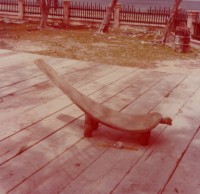
The origin of the items taken from the Victoria Library was unclear. No paperwork existed to show where the items were discovered, or by whom, nor how they ended up at the Victoria Library. The first record of the duhos could be as early as 1893 when a visitor recorded that several ceremonial seats were on display at the Library. However when the archaeologist Theodore De Booy visited the Library in 1912 he only recorded seeing wooden platters on display: it would be surprising for him to have omitted the impressive duhos if they were there. We do know that records for the 1950s and photographs taken in the 1970s record two duhos and platters on display at the library.
The Museum had spent several years trying to locate the stolen items and all of its trails seemed to point to the fact the items were stolen to order by an American collector and were now in private hands somewhere in the USA. Without proof though the Museum could not pursue the trail and in truth it was felt that the people of the Turks and Caicos Islands would probably never see these items again.
An Email from the Blue
At the beginning of 2003 Andre Godet visited the Museum. Grandson to Leon Godet, he regularly visited Grand Turk as a boy in his summer holidays and he remembered the Island with fondness. Andre, who now lives in Canada, contacted the Museum via e mail soon after his visit with some very good news.
During his visit he was impressed with the Museum and its Lucayan Gallery. Andre knew the whereabouts of a duho that had come from the Turks and Caicos Islands and offered to assist in its recovery. His next email contained a digital image of the duho. The duho in the image rang a bell. I wasn’t sure where I had seen it, so I went through our files and found two very grainy images of several Lucayan items outside the Victoria Library in Grand Turk in the 1970s. This duho looked the same as the one in the 1970s image but it was hard to tell because of the quality of the image.
Here serendipity played a hand. One of the Leicester students carrying out research at the Museum, Marina Antonopoulou, was reorganizing the Lucayan files in the Museum library. These needed major resorting and she volunteered to do this the day after Andre Godet’s email. Within a few moments she had found a collection of photographs probably taken by archaeologist Shaun Sullivan around 1978. These showed the Lucayan/Taino items at the Library, photographed in detail on the library steps. This must have happened shortly before their theft. Within these photographs were some very clear images of the library duho. The one that was being offered was definitely the one that was stolen from the library in the late 1970s.
Now that we were sure the item had been stolen we were faced with a quandary. Following international museum code of ethics, which states that a Museum must not knowingly take in stolen property, We contacted the Turks and Caicos Islands Police who advised us to seek advice from the Attorney General’s Chambers. After consultation with the Attorney General it was decided that it was not in the country’s interest to pursue the possible prosecution of anybody involved in the return of the duho. It was, in fact, deemed more important to get the item into the safekeeping of the Museum for the people of the Turks and Caicos Islands. With this backing we negotiated the return of the duho.
It turned out that the duho was now in Nassau with Andre’s father Dr John Godet, where it was for 15 years or more. The full story started to unfold. Shortly after the theft of the duho Leon Godet managed to recover it from the thieves. He knew of its importance and what a loss to the country if it was allowed to go into a private collection. It was clear that if it was returned to the Library it would probably be stolen again.
In the late 1980s Leon Godet died and his son (John) and grandson (Andre) took some of his possession to Nassau where they were living. This included the duho. After seeing replicas of duhos in Nassau, Andre’s mother realised the items importance. Following their trip to Grand Turk in 2003 the family realized that there was now an organization that could provide a secure display space so the item could again be viewed by the local people. This was the Turks and Caicos National Museum.
The Return
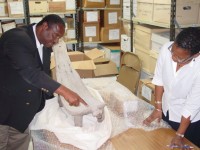
After offering the item to the Turks and Caicos National Museum, Dr John Godet met with Kim Outten Stubbs, Curator of the National Museum of the Bahamas. After this meeting John delivered the duho to her office. Kim was also keen to see the item come back to the Turks and Caicos Islands because her family originated from these Islands. Kim employed Jeff Martin, owner of Atlas Movers, to make a secure packing case (image at left), to provide the paperwork for the item to be exported and to carry the item from the Museum’s offices to the airport. Kim also approached Mr. Milo Butler III, Manager, Customer Services, Bahamasair, and he agreed to waive the freight charges for the journey from Nassau to Providenciales.
Clinton Wilson, Collector of Customs for the Turks and Caicos, agreed to allow the item to be cleared at the Museum so that the crate wouldn’t have to be opened at Providenciales or Grand Turk airports, which could have put the object at risk. Skyking agreed to carry the item onto Grand Turk free of charge. The transfer of the duho from Nassau to Grand Turk could not have gone any smoother, which can be put down to the professionalism of customs officers in both countries and the ground crew for Bahamasair and Skyking.
On the 22nd October 2003 there was a reception at the Museum to officially unveil the duho in its new display case. The item is now on display in the Lucayan Gallery (image at right).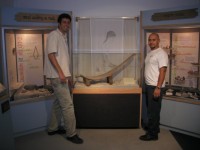
The Museum would like to thank the following for assisting us with the return and display of the duho:
- Bahamas National Museum, especially Kim Outten Stubbs
- Friends of the Turks and Caicos National Museum for funding the shipping crate and display case
- Bahamasair, especially Mr. Milo Butler III, Manager, Customer Services and Christine Hanna, Manager of Domestic Cargo for her assistance.
- Skyking, especially Mr Lightbourne
- Clinton Wilson, Collector of Customs for the Turks and Caicos
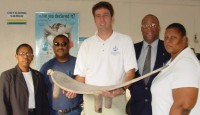
Duho on its return to the Turks & Caicos National Museum.
